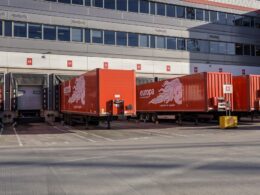by Alex Buckley, General Manager of EMEA and Asia Pacific Operations for DispatchTrack.
Logistics is all about getting the right goods to the right place at the right time. But as the world evolves, the definition of “right time” keeps getting more and more narrow. Where the right time for a delivery in the past might have had some flexibility, customers increasingly expect fast turnarounds in clearly defined timeslots. And with the rise of delivery on demand, sometimes the right time means in less than 30 minutes from when the order is placed.
It is hard to overstate how complex a challenge this poses for food delivery services, retailers, grocers, and anyone else who wants to capitalise on consumer demand for rapid delivery turnarounds. Luckily, new technologies including improved AI to smarter and more scalable SaaS platforms, are making it more feasible than ever to power rapid delivery turnaround times while staying efficient. The trick for ensuring experiences that will drive repeat business while keeping costs manageable is to follow these five best practice tips;
Understand the on-demand use case
From a logistics standpoint, on-demand deliveries are fundamentally different from typical last mile delivery use cases. Rather than dynamically planning routes the night before and executing a fleshed-out plan, you will be both planning and executing on the fly, meaning that you will be leveraging your delivery capacity in a completely different way. You will be making a range of turnaround time promises, working with an assortment of fleets and drivers (owned vs contract, e.g.), and spending variable amounts of time on site loading and delivering the order depending on your business.
That is why it is so important to leverage technology that is specifically designed for on-demand deliveries, while still giving you the ability to customise your delivery parameters as needed to fit your logistics strategy. In this way, you put yourself in a much better position to meet, and exceed, both internal and external expectations.
Prioritise real-time connectivity
One of the things that makes the on-demand use case so unique is how high-touch it is from an operational perspective. Typical last mile deliveries already require constant connectivity between planners, drivers, and customers, but the time pressures required for rapid delivery turnarounds only magnify that need to new proportions. To really succeed at getting the right goods to the right customers in a matter of minutes, you need the ability to see driver status and availability in real time, communicate with both drivers and customers completely seamlessly, and track deliveries from end to end without constantly hunting for the right data. This is a matter of staying connected in real time, but it is also a function of strong UX; if driver and delivery information is available but hard to parse, it can become difficult to keep up.
Automate routing and despatching
One of the reasons that rapid delivery turnarounds have not been scalable before now is that they require too much rapid calculation to be easily managed by hand. Success depends on finding the right driver for any job that comes in, as soon as it comes in; then confirming their availability, despatching them with an efficient route to the pickup and drop-off points, contacting the customer with updates, and confirming the successful delivery.
Doing this by hand at a high volume would require a small army of despatchers. That is why automating early and often is so crucial to getting this complex process right. When your delivery management system automatically finds drivers, routes them, and notifies customers, you can focus on the higher-level tasks that keep the whole operation running smoothly from a holistic perspective.
Put customer needs first
Ultimately, on-demand deliveries are fundamentally a customer-led phenomenon—which is precisely why it is imperative to put customer engagement front and centre throughout the process. This can take a few forms;
- Giving customers dynamic delivery time slot options
- Sending notifications and updates through the customer’s preferred communication method throughout the delivery process (e.g., text or email)
- Two-way communication during the delivery such that you and your team can spot and address issues in real time
- Delivery surveys to track customer satisfaction and enable continuous logistics improvements
Obviously, you need a strong logistics foundation to even make it possible to offer this level of customer engagement without causing frustration. But when the deliveries themselves are also going smoothly and adhering to best practices, you can leverage operational efficiency and effectiveness as a direct means of increasing trust and confidence between you and your end customers.
For more information, please visit www.dispatchtrack.com.













